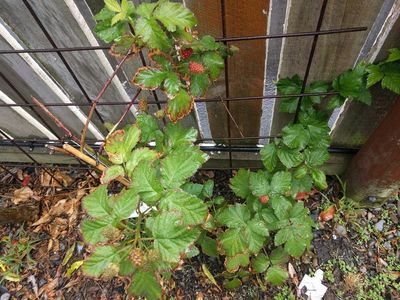Caring for Boysenberries in Winter
Mulch: Boysenberry winter protection includes several inches (5 to 10 cm.) of mulch such as straw, dried leaves, lawn clippings, pine needles, or small bark chips. Mulch protects the plant’s roots from fluctuations in soil temperature and also helps prevent soil erosion that often occurs in heavy rainfall. Apply the mulch in fall, after a few hard frosts. Aim for at least 8 inches (20.5 cm.) of straw, or 3 to 4 inches (7.5 -10 cm.) of other mulches. Fertilizer: Don’t fertilize boysenberries after late spring. Fertilizer produces tender new growth that is likely to get nipped in freezing weather. Boysenberries should only be fertilized before new growth emerges in early spring,
Winterizing Boysenberry Plants in Extremely Cold Climates
Boysenberry winter care is a little more involved for gardeners in far northern climates. Colorado State University Extension suggests the following steps for heeling in plants, which should be done after early November:
Lay the boysenberry canes down so they face in one direction. Hold the canes down by placing a shovelful of soil on the tips. Use a shovel or hoe to create a shallow furrow between rows. Rake that soil over the canes. In spring, use a pitchfork to lift the canes, then rake the soil back into the furrows.
Additional Boysenberry Winter Care
Rabbits love to chew on boysenberry canes during the winter. Surround the plant with chicken wire if this is a problem. Reduce water after the first frost. This will help harden the boysenberry bushes for winter.
